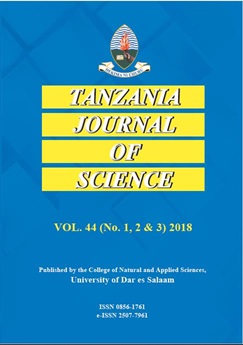Monitoring Impervious Surface Area Dynamics to Assess Urbanisation of a Catchment: Msimbazi River Valley Dar es Salaam, 1989 - 2015
Abstract
This work examined the effects of land use and cover change on the impervious surface as a measure of urbanisation together with its driving factors such as population growth and economic development. The spatial and temporal variations of the impervious surface area were extracted from the Landsat images of the years 1989, 1995, 2005, and 2015. Data analyses involved the selection of the endmember through Minimum Noise Fraction (MNF) and Linear Spectral Mixed Analysis (LSMA) on the images. Four dominant land cover types were mapped as results, which are forest, non-forest vegetation, bare-land, and built-up area. The non-forest vegetation and bare land were dominant cover classes in the catchment in 1989, occupying over 80% of the land use and cover. The built-up environment increased from 11% in 1989 to 53% in 2015, encroaching other covers. This correlates with the growth of population and gross domestic product as measures of economic development and driving forces for the growth.
Keywords: Land use; Impervious Surface Area; Urbanisation; Msimbazi River; Minimum Noise Fraction


